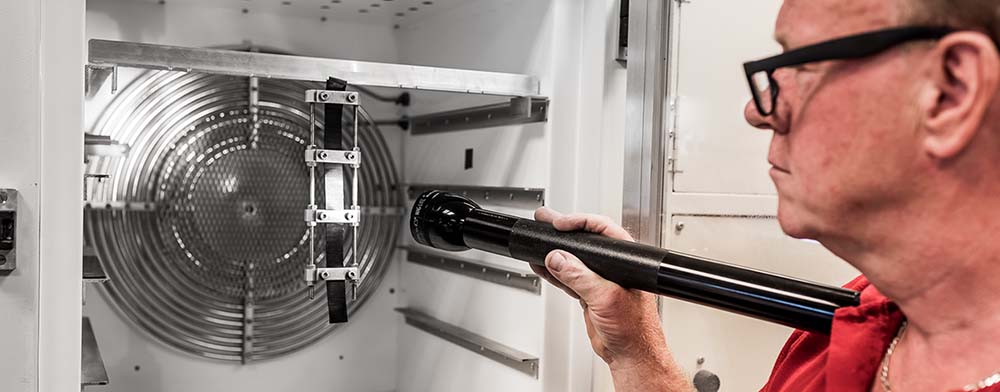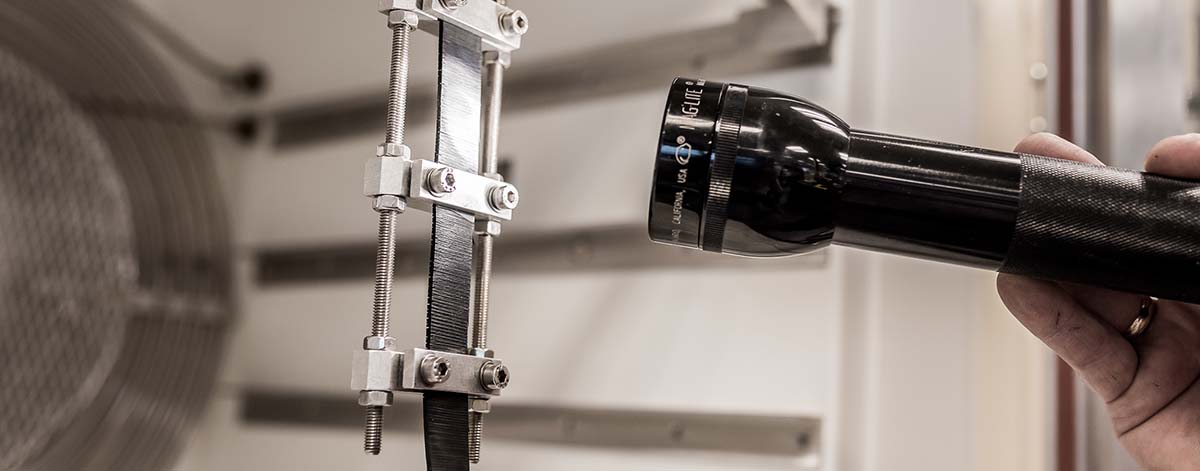The effects of ozone & ultra violet on rubber conveyor belts
There are two ‘invisible’ and inescapable factors that have a huge influence on the operational lifetime of a rubber conveyor belt. Those factors are ozone (O3) and ultraviolet light (UV). Contrary to popular belief, the damage they cause is not limited to high altitudes or sunny climates.

From protector to the destroyer
Ozone (O3) occurs naturally in the upper atmosphere. It is formed continuously by the action of solar ultraviolet radiation on molecular oxygen (O2). At high altitudes, ozone acts as a protective shield by absorbing harmful ultraviolet rays. Wind currents carry O3 to the atmosphere at the Earth’s surface. At low altitudes, ozone becomes a pollutant. Ground-level or “bad” ozone is not emitted directly into the air but is created by the photolysis of nitrogen dioxide (NO2) from automobile exhaust and industrial discharges. This is known as ozonolysis. Ozonolysis is the reaction that occurs between the molecular structure (double bonds) and ozone.
Even tiny traces of ozone in the air will attack the molecular structure of rubber. It increases the acidity of carbon black surfaces with natural rubber, polybutadiene, styrene-butadiene rubber and nitrile rubber being the most sensitive to degradation. The first visible sign is when cracks start to appear in the surface of the rubber. Further attacks then occur inside the freshly exposed cracks, which continue to grow steadily until they complete a ‘circuit’ and the product separates or fails. The cracks are always oriented at right angles to the strain axis. The dynamic stress that a conveyor belt undergoes while in operation is considerable. Ozone attack occurs at the points where the strain is greatest.
Although ozone concentrations can differ from one location to another, ground-level ozone pollution is ever-present and its effects should therefore never be under-estimated.
Ultra violet light
Ultraviolet light from sunlight and fluorescent lighting also has a seriously detrimental effect on rubber because it accelerates rubber deterioration by producing photochemical reactions that promote the oxidation of the rubber surface resulting in a loss in mechanical strength. This is known as ‘UV degradation’. In belts that are not fully resistant, the combined effect of ozone and ultraviolet not only dramatically reduce operational lifetime, they also cause significant environmental and health and safety problems because fine particles of dust penetrate the cracks which are then discharged (shaken out) on the return (underside) run of the belt.
Entirely preventable
The damage caused by ozone and ultraviolet is entirely preventable. Several years ago, we at Dunlop were among the very first in the world to make use of new technology that enabled the effects of ozone to be tested and measured. We equipped our laboratory in Drachten in The Netherlands with the very latest ozone testing equipment and introduced mandatory testing to EN/ISO 1431 international standards for all Dunlop rubber products.
As a direct result, special anti-oxidant additives that act as highly efficient anti-ozonants and protect against the damaging effects of ozone and ultraviolet became an essential ingredient in every Dunlop rubber compound without exception.
EN/ISO 1431 testing
To scientifically measure resistance to ozone in accordance with the EN/ISO 1431 test method, samples are placed under tension (eg. 20% elongation) inside an ozone testing cabinet and exposed to highly concentrated levels of ozone for a period of up to 96 hours (@ 40°C, 50 pphm and 20% strain).

Samples are closely examined for evidence of cracking at two-hourly intervals and the results are carefully measured and recorded. Experience has determined that in order for the rubber to be regarded as adequately resistant, the pass criteria needs to be that the rubber sample does not show any signs of cracking within the 96-hour period.
Despite its crucial importance, ozone and UV resistance is very rarely, if ever, mentioned by conveyor belt manufacturers and suppliers. This is because the anti-ozonants needed cost money. The best advice is to make ozone & UV resistance a constant requirement when selecting any rubber conveyor belt.
